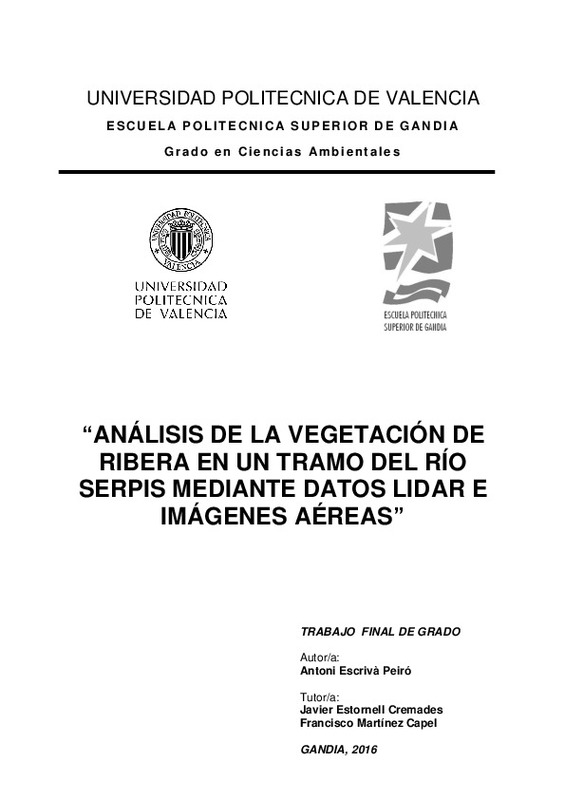JavaScript is disabled for your browser. Some features of this site may not work without it.
Buscar en RiuNet
Listar
Mi cuenta
Estadísticas
Ayuda RiuNet
Admin. UPV
Análisis de la vegetación de ribera en un tramo del río Serpis mediante datos LIDAR e imágenes aéreas
Mostrar el registro completo del ítem
Escrivà Peiró, A. (2017). Análisis de la vegetación de ribera en un tramo del río Serpis mediante datos LIDAR e imágenes aéreas. Universitat Politècnica de València. http://hdl.handle.net/10251/88837
Por favor, use este identificador para citar o enlazar este ítem: http://hdl.handle.net/10251/88837
Ficheros en el ítem
Metadatos del ítem
| Título: | Análisis de la vegetación de ribera en un tramo del río Serpis mediante datos LIDAR e imágenes aéreas | |||
| Autor: | Escrivà Peiró, Antoni | |||
| Director(es): | ||||
| Entidad UPV: |
|
|||
| Fecha acto/lectura: |
|
|||
| Resumen: |
In this work it is proposed an alternative system to the traditional methods of field work for the analysis of riparian vegetation afected by the regulation of channels in rough terrain or with hard access. The main goal ...[+]
En este trabajo se propone un sistema alternativo a los métodos tradicionales de trabajo de campo para el análisis de la vegetación de ribera afectada por la regulación de cauces en terrenos abruptos o de difícil acceso, ...[+]
|
|||
| Palabras clave: |
|
|||
| Derechos de uso: | Reserva de todos los derechos | |||
| Editorial: |
|
|||
| Titulación: |
|
|||
| Tipo: |
|
recommendations
Este ítem aparece en la(s) siguiente(s) colección(ones)
-
EPSG - Trabajos académicos [5005]
Escuela Politécnica Superior de Gandia







